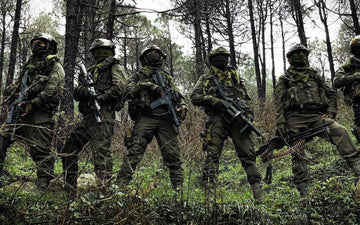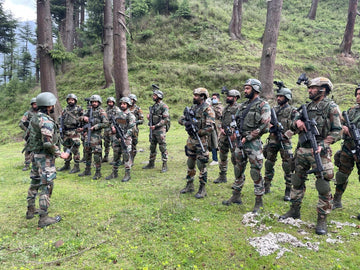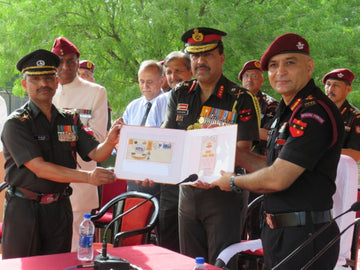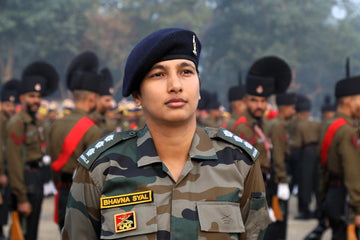The Word Association Test (WAT) is a pivotal component of the Services Selection Board (SSB) interview process, integral for candidates aspiring to join the esteemed Defence forces. As part of a rigorous evaluation methodology, the WAT delves deep into a candidate’s psychological profile, offering a unique lens through which assessors can discern personality traits, thought processes, emotional responses, and even spontaneity. In an environment where critical decision-making and quick responses can mean the difference between success and failure at crucial junctures, understanding the WAT's nuances is essential for aspiring candidates.
Historical Context
The SSB interview process has evolved significantly over the years, adapting to the changing needs of the Armed Forces and the demands of modern warfare. Early assessments were primarily focused on physical fitness and technical acumen; however, as the nature of conflict has transformed, so too has the understanding of what constitutes an effective leader or soldier. In this context, psychological testing, including the WAT, has gained prominence.
Introduced as part of the psychological evaluation suite used by SSBs, the WAT is rooted in the principles of projective psychology. It invokes the Freudian theory that our unconscious drives influence our thoughts and actions. Given the critical roles individuals in the Defence forces play, assessing these unconscious elements became essential. The WAT provides insight into a candidate’s personality that goes beyond surface-level judgments, revealing how they might react under pressure, in a combat scenario, or in critical leadership situations.
Objectives of the Word Association Test
The WAT's primary objective is multi-faceted, encompassing various aspects of personality assessment:
- Cognitive Agility: The ability to think quickly and adapt to new information.
- Emotional Intelligence: Understanding and managing one’s own emotions as well as empathizing with others.
- Creativity: Demonstrating original thought and innovative responses to challenges.
- Adaptability: The capacity to adjust to various situations and environments.
- Assertiveness: The confidence to express opinions while respecting others.
In essence, the WAT serves as a yardstick for essential traits required in the disciplined and unpredictable world of the Defence forces.
Structure of the Word Association Test
The structure of the WAT is designed to maximize efficiency and ensure candidates remain mentally agile under pressure. The test encompasses:
- Duration: Candidates are presented with 60 words, each displayed for 15 seconds, leading to a total test duration of 15 minutes.
- Response Format: While viewing each word, candidates must promptly write the first thought or sentence that comes to mind.
- Continuity: There is no interruption between the words, requiring candidates to maintain focus and recall their initial response swiftly.
Types of Words Used in WAT
The selection of words in the WAT plays a crucial role in eliciting the desired responses. Words are categorized into three distinct groups:
- Negative Words: Terms like "Cheat," "Noise," "Terror," "Distress," and "Evil" are included to evaluate how candidates handle challenging or adverse concepts.
- Neutral Words: Words such as "Help," "House," "Proposal," "Father," and "Child" probe into ordinary experiences and the candidate's relationship with common themes.
- Positive Words: Terms like "Loyal," "Great," "Attractive," "Funny," and "Ambitious" aim to uncover aspirational responses and positive associations.
Response Expectations
One of the WAT’s core tenets is the requirement for candidates to articulate immediate and unfiltered expressions of thought. Here’s what assessors look for:
- Spontaneity: The first response is generally viewed as the most genuine.
- Clarity and Relevance: Responses must make sense in relation to the word presented.
- Depth of Insight: Candidates who delve deeper into their thoughts exhibit a greater understanding of complex emotions, indicative of higher emotional intelligence.
Significance of the Word Association Test in the SSB Interview Process
In the context of SSB interviews, the WAT’s significance cannot be overstated. It provides indispensable insights into a candidate’s psychological makeup. Here's how:
- Holistic Assessment of Personality: The WAT evaluates traits that traditional assessment methods may overlook, such as empathy, resilience, and leadership potential.
- Foundation for Further Evaluation: Responses from the WAT can guide assessors during personal interviews, leading to more nuanced queries based on candidates’ initial thoughts.
- Predictive of Future Behavior: Proficient understanding of a candidate's immediate responses can help predict how they might react in operational scenarios, where leadership and rapid improvisation are crucial.
Analysis of WAT Responses
The meticulous analysis of WAT responses plays a pivotal role in candidate evaluation. Assessors are specially trained to interpret responses based on various psychological parameters:
- Behavioral Tendencies: A candidate's inclination towards positivity, negativity, or neutrality in their initial thoughts can indicate their general disposition.
- Emotional Resilience: How candidates manage negative words can reflect their ability to cope under stress.
- Intelligence and Depth: Thoughtful responses suggest a higher cognitive processing capability and depth of insight.
Case Studies and Real-World Applications
To appreciate how the WAT functions in real-world applications, consider various scenarios involving candidates who faced pressure during their assessments:
- Anxiety Mitigation: A candidate faced with words like "Failure" or "Loss" responded with "Learn" and "Adapt," highlighting their ability to transform perceived negatives into opportunities for growth. Such responses resonated positively with assessors and reflected important leadership qualities.
- Conflict Resolution: Another candidate reacted to "Cheat" by writing "Integrity," demonstrating a clear understanding of ethical values — a critical trait for future Defence personnel.
These examples illustrate the power of the WAT in identifying potential leaders who can thrive in challenging situations.
Statistical Data and Research Insights
The effectiveness of the Word Association Test has been supported by various research studies:
- A study observed that candidates who responded positively towards negative words demonstrated a higher likelihood of success in stressful field training environments.
- According to a survey of past SSB assessors, over 80% indicated that the WAT played a significant role in their final assessment of a candidate, underscoring its value in personality evaluation.
These statistics solidify the WAT’s relevance and efficacy as a testing method.
Comparative Analysis
WAT vs. Other Psychological Tests
In the landscape of psychological evaluations for Defence forces, the WAT can be compared to other common tests, such as the Thematic Apperception Test (TAT) or Rorschach Inkblot Test. Here’s how they differ:
- Structure: While the WAT uses explicit words to gauge immediate emotional reactions, TAT and Rorschach require longer narratives or interpretations of ambiguous stimuli, focusing on deeper psychological constructs.
- Response Time: The WAT's quick-response format emphasizes a candidate's spontaneity, whereas the other tests may encourage deeper, more contemplative responses over longer periods.
- Assessment Focus: WAT places heavier emphasis on a candidate's adaptability and immediate behavioral inclinations than TAT and Rorschach, which may probe underlying motivations and long-term personal narratives.
Challenges and Solutions in Preparing for the WAT
Common Challenges
Candidates often experience various obstacles when preparing for the WAT:
- Nervousness: The time constraints can elevate anxiety levels, hindering spontaneous responses.
- Overthinking: Candidates may struggle with the urge to formulate elaborate or perfect responses, which can detract from authenticity.
- Word Association: Some candidates may be unfamiliar with certain words and struggle to connect them to immediate thoughts.
Proposed Solutions
To navigate these challenges effectively, candidates can adopt several practical strategies:
- Practice Drills: Regular practice with mock WAT sessions can help familiarize candidates with the format and reduce anxiety.
- Mindfulness Techniques: Implementing relaxation techniques, such as deep-breathing exercises, can help candidates stay calm and focused.
- Building Vocabulary: Engaging with a broad range of topics and reading diverse materials can enhance a candidate's ability to connect words with relevant thoughts quickly.
Future Trends and Predictions
The WAT is poised to undergo iterative improvements as psychological understanding continues to evolve. Some predicted trends include:
- Integration of Technology: Virtual reality assessments may emerge, using digital platforms to simulate real-time decision-making scenarios. This could enhance the assessment of impulse control and decision-making processes under pressure.
- Enhanced Personalization: Future iterations of the WAT might personalize word sets based on a candidate's background, fostering more relatable and context-driven assessments.
- Expanded Analytical Frameworks: Incorporating artificial intelligence and machine learning in analyzing responses may yield even deeper insights into candidates' psychological profiles.
Conclusion
Understanding the Word Association Test is an indispensable aspect of success in the SSB interview process. As a psychological evaluation tool, it provides a wealth of information about candidates, revealing crucial personality traits necessary for the nuanced environment of the Defence forces. For aspiring candidates, mastering the nuances of the WAT not only prepares them for the selection process but also equips them with critical self-awareness and emotional intelligence that are vital in any challenging career path.
Whether you're engaging with training resources from SSBCrack or utilizing their tailored study materials, equipping yourself with knowledge and practice will significantly enhance your performance in the WAT and your overall SSB interview. The journey toward a career in the Defence forces begins with self-understanding and preparation, and the WAT serves as both a challenge and an opportunity for growth.





